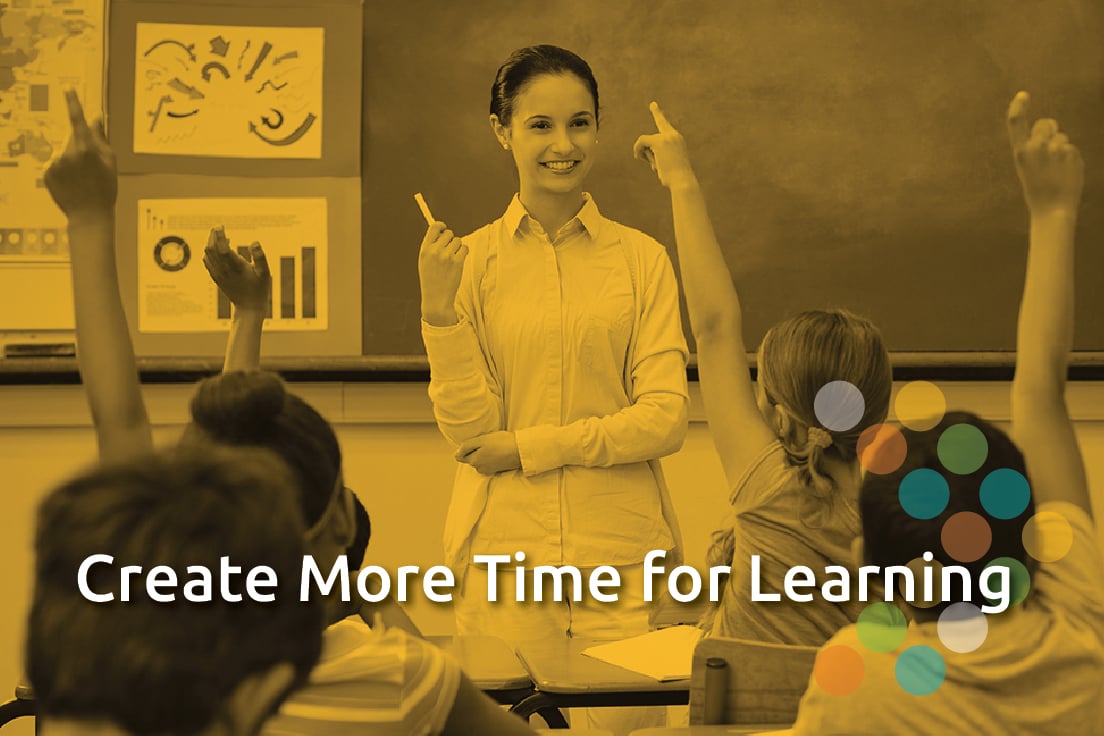By: Allyson J. Kiss
Have you ever faced a difficult challenge in your life? Whether it be a deadline at work, interviewing for a job, or planning for the first school conferences of the year, it is not uncommon to feel overwhelmed and think, “This is too hard” or “I give up.” Students are also susceptible to challenging situations that may provoke these thoughts. In the school setting, it could be reading British literature, conducting a science experiment, or solving a difficult mathematics problem. Helping students develop a growth mindset can provide them with skills to combat negative thoughts and persist in the face of challenging situations both academically, and throughout life (Dweck, 2006).
What is a Growth Mindset?
A mindset is a person’s set of attitudes and beliefs about his or her ability and success. Carol Dweck proposed that there are two primary mindsets: fixed and growth (2006). A fixed mindset suggests that intelligence and abilities are innate. According to this mindset, you either are or aren’t good at something and effort will not change this. In contrast, a growth mindset proposes that intelligence and other skills are changeable and can improve with effort and practice. When faced with a challenging task, applying a growth mindset makes it more likely that you will be more resilient and persist until you are able to master a skill.
To help demonstrate fixed and growth mindsets, consider the following statements that a person could make in response to a challenging situation. Keep in mind that such statements are spontaneous and said to oneself instinctively.
| Fixed Mindset | Growth Mindset |
| This is too hard. | This may take some time and effort. |
| I give up. | I’ll use some of the strategies I’ve learned. |
| I am a failure. | Mistakes help me improve. |
| I’m not good at this. | I’m on the right track and can practice. |
| I don’t understand. | What am I missing? |
| I’m not a math person. | I can learn math if I try new strategies and practice. |
| I can’t read. | I’m going to train my brain in reading. |
Dweck’s work has shown that when students express statements representative of a fixed mindset, teachers can teach them alternative statements that reflect a growth mindset.
How Does Mindset Influence Student Learning?
Having a fixed or growth mindset can result in different behaviors related to school and achievement. The following example shows how mindsets can affect children in school.
David and Maya are both experiencing difficulties in fifth grade mathematics. David has a fixed mindset. He believes that he is just not smart in math. His teacher tells him, “It’s okay, not everyone can be good at math. At least you are a good reader!” While his teacher is trying to encourage him, these words might actually unintentionally reinforce a fixed mindset. David continues to view himself as bad at math. He tends to avoid challenges in fear of failure and he gives up easily. In David’s mind, there is no point in trying because he does not believe he can improve. It’s also likely that David is ignoring useful feedback and will not reach his potential.
Maya, on the other hand, has a growth mindset. She knows she is struggling in math but believes that she can improve if she puts forth her best effort. Although Maya is unable to correctly solve some problems, she believes it is important to do well in math and she continues to persist and try new strategies. She views her mistakes as a learning process and uses her teacher’s feedback to improve and master a skill. Her mindset leads to increased motivation, which leads to improved practice and higher achievement in mathematics. While David and Maya might have originally experienced similar difficulties in mathematics, Maya’s growth mindset allowed her to reach higher levels of success and confidence.
Mindset can also impact students who are high achieving. These students might not think they need to study or practice since they perceive themselves as intelligent. This tends to limit them from seeking more challenges and reaching their full potential. If they don’t seek challenge, they are less likely to fail and thus they will confirm their beliefs about their intelligence. Thus, a growth mindset is also important for high achieving students, especially girls, who have been observed to avoid academic risk taking (Boaler, 2013).
What Can Educators Do?
So why do some students develop a fixed mindset while others develop a growth mindset? Mindsets are typically reinforced by parent or teacher feedback that influences how students think about their abilities and their learning. Although well intentioned, parents and teachers might communicate a fixed mindset to students by saying, “It’s okay I was never good at math either” or “You are so smart at reading.” Although these words are designed to be encouraging, they can end up limiting a student’s efforts to improve. The good news is that there is evidence that a growth mindset perspective can be taught (Dweck, 2006). Here are some examples of strategies that educators can use to create a culture of growth mindset for students in their classroom and school:
- Provide praise using effort-based language rather than product-based statements. For example teachers might say, “Great job! You spent a lot of time and practice on that and now you really improved and understand it.” This helps students attribute their success to effort rather than innate abilities. This works by focusing students’ attention on how they can change their behaviors and outcomes over time.
- Emphasize that learning is a process of mastering skills and allow opportunities to retake assignments or tests to reach mastery learning. An excellent way for students to view their growth is through regular progress monitoring, especially with frequent review of progress graphs such as those available in FAST™.
- Help students to understand that errors are expected and ongoing practice is needed to become an expert. Sometimes we want to praise students for learning quickly but this can lead students to be discouraged when some other task takes more time. Remind students that mistakes are an opportunity to learn.
- Explicitly teach students about the growth mindset and that intelligence, talent, and school performance can be improved with effort. Encourage students to use growth mindset language when they make statements such as “this is too hard.”
How can Assessment Help?
As noted above, assessment has can have an important role in fostering a growth mindset (Martin, 2015). This is because assessment provides feedback about performance. Formative assessment is particularly useful for promoting a growth mindset. Formative assessment refers to a process of collecting data to provide feedback, inform instruction, and to monitor a student’s progress toward a learning goal. In the FAST™ system, there are two types of formative assessment tools: screening and progress monitoring. Screening assessment involves having all the students in a school complete brief tests of important skills. Screening assessments are usually conducted three times a year to keep track of how all students are doing and to see which students might need extra help. Through showing the scores to students, teachers can document that regular growth is expected of all students. For those students whose screening scores show limited growth, additional instruction (often called intervention) can be provided to help the student reach a learning goal.
For students who participate in intervention, it is very important to conduct regular progress monitoring. Progress monitoring involves having students complete more frequent regular assessments of the specific skill that a student needs to improve. FastBridge Learning recommends weekly monitoring, and FAST™ has progress measures in reading, math, and behavior. FAST™ progress monitoring reports include graphs that teachers can show to students so that they are able visualize their improvement and become more engaged in the learning process. Having students review their own progress data on a regular basis is another way to apply the growth mindset in everyday teaching. Collecting and reviewing regular progress data, as well as setting high but realistic expectations for each individual student, make the link between effort and success clear (Dweck, 2006).
Summary
Students’ school outcomes are influenced by many factors. In recent years, research has documented that certain aspects of student success are influenced by whether a student has a fixed or growth mindset about his or her school outcomes. When students have a growth mindset they tend to persist in the face of challenge, and put forth more effort to succeed. Teachers play an important role in helping students to develop and use a growth mindset. Educators can utilize a number of effective practices to help students use a growth mindset. This includes providing effort-based praise and using regular progress monitoring to provide timely and growth-oriented feedback for all students.
References
Boaler, J. (2013). Ability and mathematics: The mindset revolution that is reshaping education. Forum, 55(1), 143 – 152. doi: 10.2304/forum.2013.55.1.143
Dweck, C.S. (2006). Mindset: The new psychology of success. New York: Random House.
Martin, A. J. (2015), Growth approaches to academic development: Research into academic trajectories and growth assessment, goals, and mindsets. British Journal of Educational Psychology, 85, 133–137. doi:10.1111/bjep.12071
Allyson Kiss is a doctoral student at the University of Minnesota–Twin Cities. She has been a part of FastBridge Learning’s research team for three years and continues to contribute to the development and refinement of various FAST™ mathematics and reading assessments. Allyson is currently completing her doctoral research in the area of student attitudes toward mathematics.

![[eBook] Get the Whole Picture: Using Social, Emotional and Behavioral Assessments to Support Student Success](https://5196620.fs1.hubspotusercontent-na1.net/hubfs/5196620/AdobeStock_157265506.jpeg)





